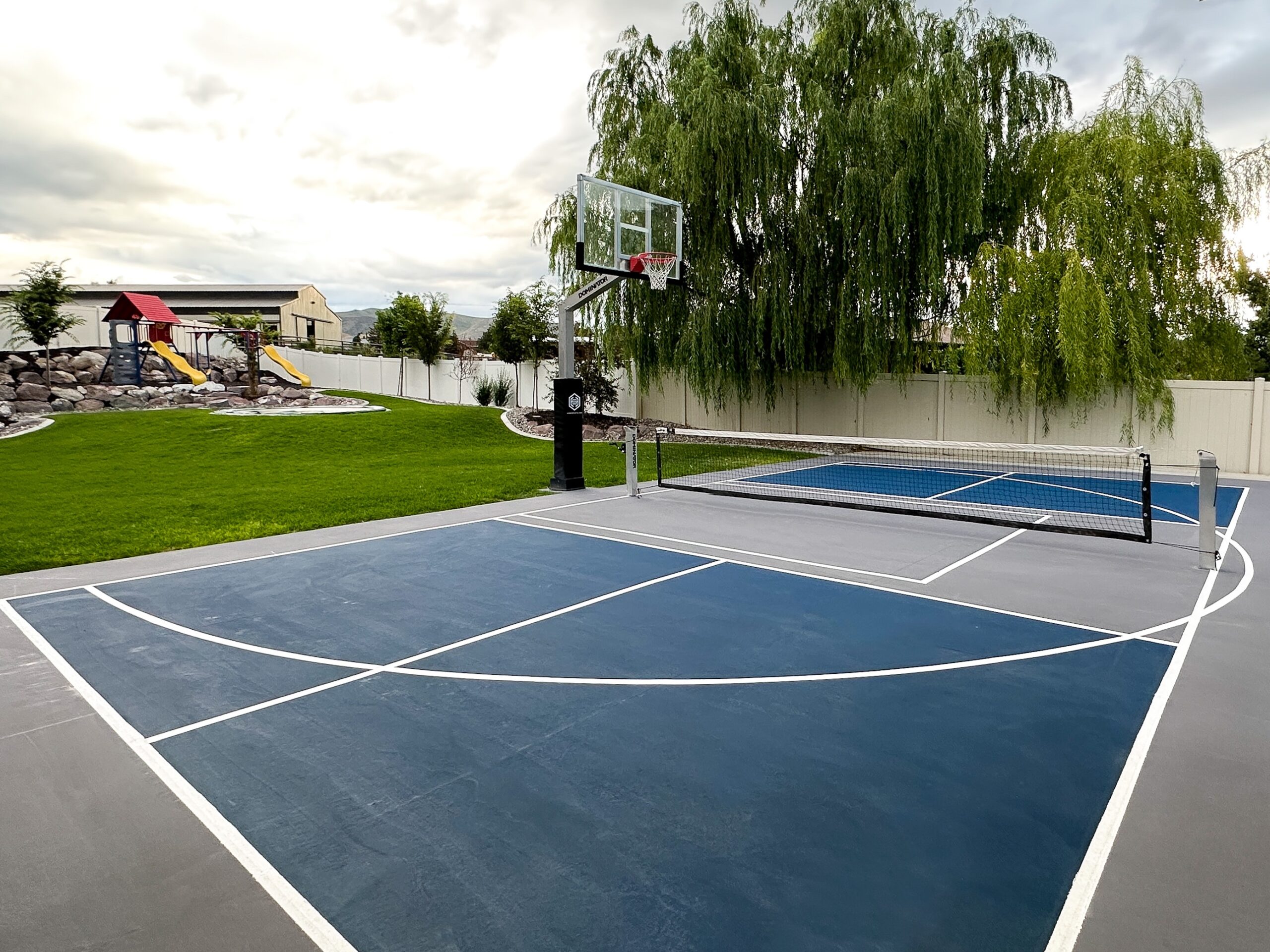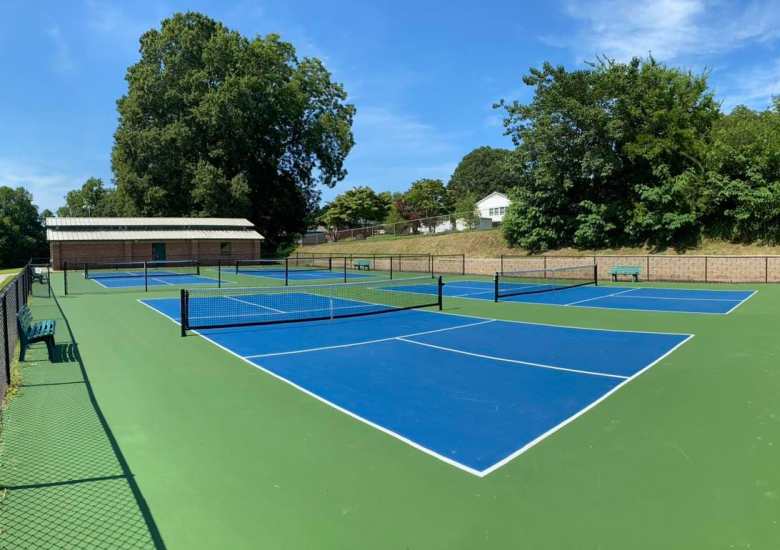Technologies in Pickleball Court Construction: Trends You Need To Know
Technologies in Pickleball Court Construction: Trends You Need To Know
Blog Article
Navigating Regulations for Pickleball Court Construction in Your Location
Constructing a pickleball court in your location calls for a nuanced understanding of various neighborhood guidelines, consisting of zoning legislations, building permits, and safety and security criteria. Each district imposes certain guidelines that can significantly affect the feasibility of your project. Engaging with local authorities and the area is crucial for making certain compliance and cultivating assistance. Browsing this regulative landscape can be intricate and lengthy. What are the crucial steps you should think about to prevent prospective risks and make sure a smooth building process?
Comprehending Neighborhood Zoning Regulations
When considering the construction of a pickleball court, comprehending local zoning regulations is crucial to making sure compliance and avoiding possible legal issues. Zoning policies dictate just how land can be utilized and commonly consist of specs pertaining to leisure centers. These laws can differ considerably by municipality, influencing factors such as court placement, dimension, sound, and lighting degrees.
Prior to starting building and construction, it is important to consult the local zoning board or planning division to determine the certain laws that relate to your building. Specific areas might limit entertainment tasks, while others might call for details licenses or adherence to specific standards. It is also vital to consider problems, which establish just how much structures have to be from residential or commercial property lines or various other structures.
Furthermore, exclusive advancements, such as house owner organizations (HOAs), might impose their very own policies relating to the building and usage of pickleball courts. Comprehending these regulations can stop expensive adjustments or litigation down the line. Involving with local stakeholders and community members can offer valuable insights and foster support for your job, making sure that it straightens with the neighborhood's requirements and expectations.
Getting Necessary Structure Permits
Exactly how does one browse the intricacies of obtaining needed building permits for a pickleball court? The procedure starts with comprehending local laws and needs set forth by community authorities. Generally, you will require to submit a detailed site plan that describes the recommended court measurements, materials, and design. This plan must abide by zoning regulations and any kind of particular policies concerning entertainment centers.

Once authorizations are gotten, it is vital to follow any kind of evaluation routines and needs throughout the building phase. Maintaining interaction with local authorities will promote a smoother authorization procedure and help avoid potential obstacles. By extensively preparing and understanding the allowing landscape, you can effectively browse the intricacies entailed in constructing a pickleball court while continuing to be compliant with all local guidelines.

Assessing Environmental Effect
When preparing the construction of a pickleball court,A comprehensive assessment of ecological effect is crucial (Pickleball court construction). This evaluation assists recognize prospective impacts on local ecosystems, water resources, and community visual appeals. Secret factors to take into consideration consist of website option-- guaranteeing go to website that the court is not improved ecologically sensitive land, such as wetlands or habitats for jeopardized species
Soil security and drainage patterns should be examined to stop disintegration and water pooling, which might negatively influence surrounding plant life and wildlife. Additionally, the option of materials is critical; deciding for lasting and eco-friendly choices minimizes ecological damage.
The implementation of effective stormwater administration methods is an additional essential element, as it assists minimize drainage and sedimentation. Engaging with neighborhood environmental firms can offer useful insights right into policies and ideal methods details to your location.
Lastly, neighborhood input can be valuable in understanding any type of regional ecological concerns and promoting support for the project. By performing a thorough environmental effect analysis, stakeholders can guarantee that pickleball court construction aligns with lasting methods and adds favorably to the neighborhood's environmental wellness.
Conforming With Security Requirements
Ensuring conformity with safety and security standards is vital for the effective building and construction and operation of a pickleball court. Following well-known safety guidelines lessens the threat of mishaps and injuries, making sure a safe and secure atmosphere for players.
Secret safety requirements include correct court measurements, surface area products, and lighting demands. The court must fulfill the official dimensions of 20 feet broad by 44 feet long for increases play, with appropriate barrier zones to stop injuries from wayward spheres. Pickleball court construction. The surface area ought to be built from non-slip products to enhance traction and minimize the chance of falls
Additionally, illumination needs to suffice for evening play, supplying consistent lighting to stay clear of shadows that can prevent exposure. Local building regulations may additionally dictate particular demands for secure fencing and net height to ensure player security and prevent unapproved access to the court location.
Routine evaluations and upkeep are necessary to support these requirements in time. By focusing on security conformity, court owners not only secure players but likewise foster a positive track record within the area. This dedication to safety and security can encourage greater participation and enjoyment of the sport, ultimately adding to its growth and sustainability.

Involving the Neighborhood in Planning
Area participation in the drawing board of pickleball court construction can substantially improve the task's total success. Engaging local residents and stakeholders fosters a feeling of possession and motivates joint decision-making, which can result in broader support for the campaign.
To properly involve the neighborhood, coordinators should initiate public meetings or workshops, offering a system for locals to articulate their opinions and preferences regarding area, design, and amenities. Studies and responses types can additionally be used to collect insights from a wider target market, ensuring that varied perspectives are considered.
Additionally, creating a community consultatory board can help with ongoing discussions and address problems throughout the planning process. This board linked here can consist of representatives from different demographics, such as neighborhood colleges, recreational companies, and area organizations, thus intensifying neighborhood depiction.
Reliable interaction is essential; updates about the task must be regularly shared using newsletters, social media sites, or neighborhood publications. By focusing on community interaction, planners can grow excitement, this link mitigate possible opposition, and produce a pickleball facility that truly resonates with local worths and demands. This joint approach not just improves the task yet also reinforces neighborhood connections.
Conclusion
In conclusion, browsing the complexities of pickleball court construction requires a thorough understanding of regional laws, including zoning laws, structure licenses, and security standards. By adhering to these guidelines and promoting collaboration, successful execution of pickleball courts can be achieved, promoting leisure chances and area health.
Building a pickleball court in your location calls for a nuanced understanding of different local policies, including zoning regulations, structure permits, and safety and security criteria.When thinking about the building and construction of a pickleball court, understanding local zoning regulations is critical to ensuring conformity and avoiding prospective legal concerns. By completely preparing and comprehending the permitting landscape, you can successfully navigate the complexities involved in creating a pickleball court while remaining compliant with all neighborhood policies.
In conclusion, browsing the intricacies of pickleball court construction requires an extensive understanding of regional regulations, including zoning regulations, building permits, and safety standards. By adhering to these guidelines and fostering collaboration, effective implementation of pickleball courts can be accomplished, advertising leisure possibilities and neighborhood health.
Report this page